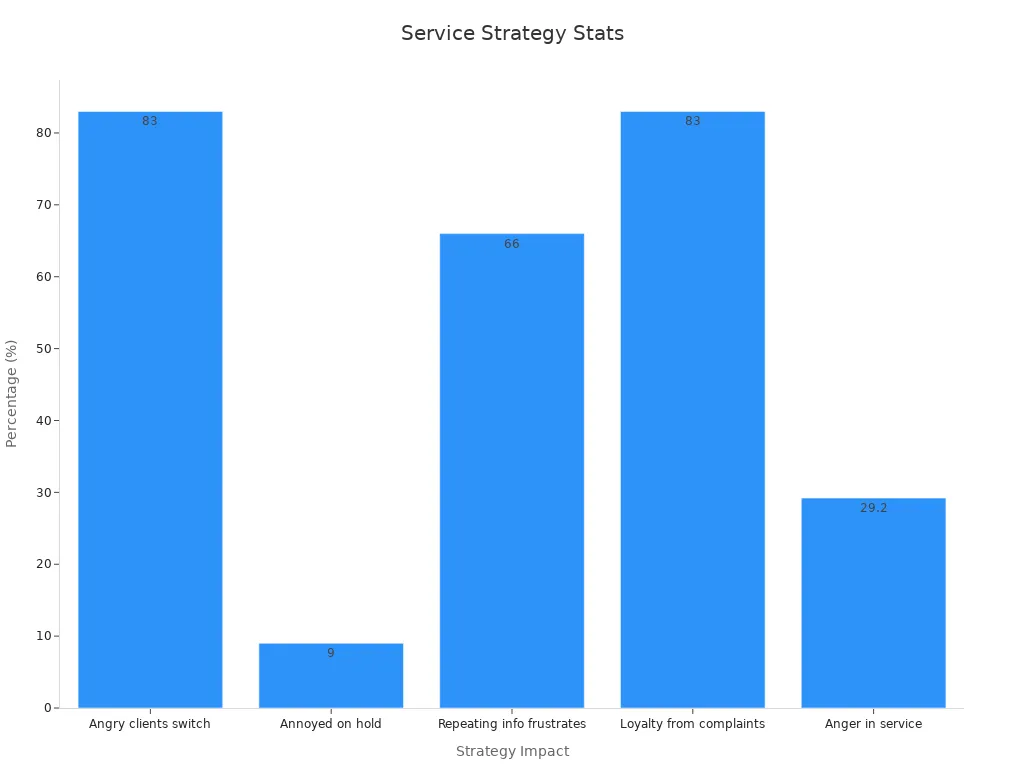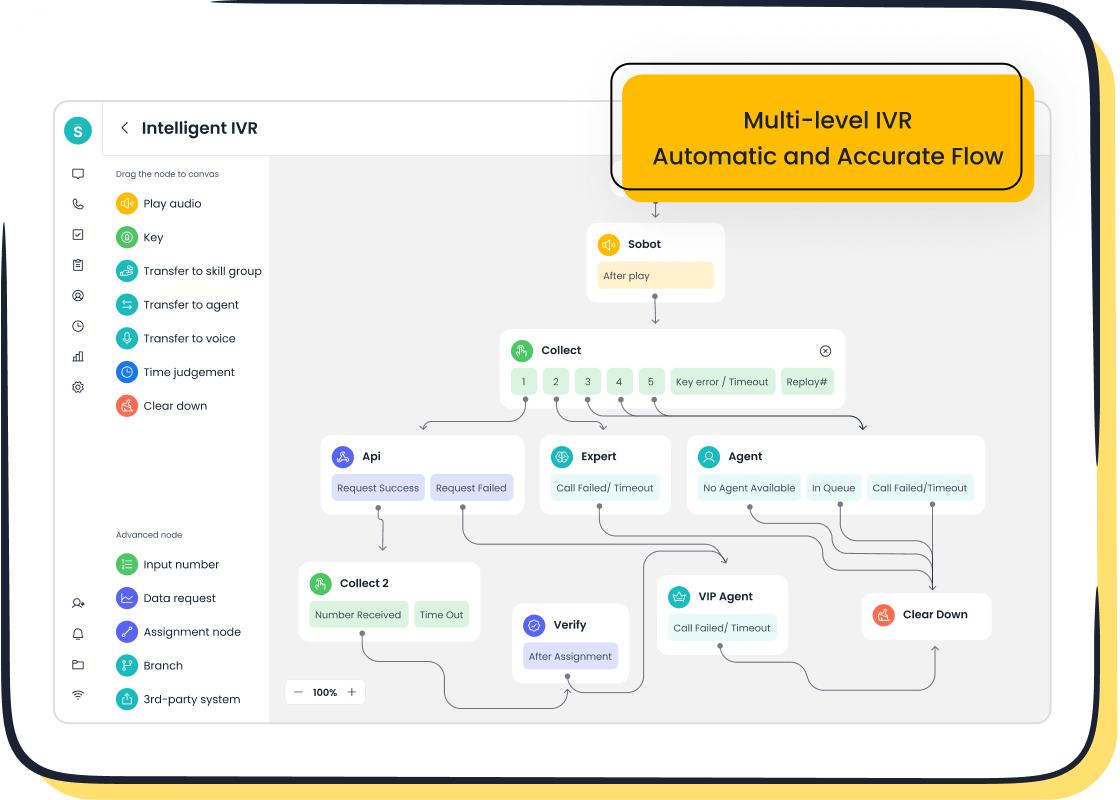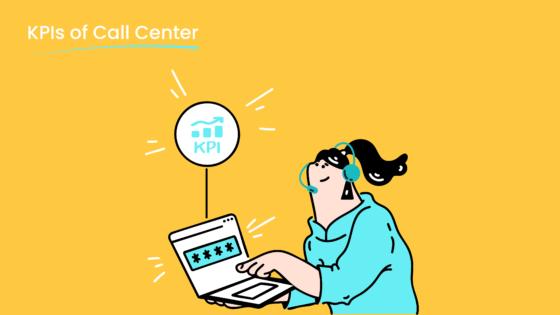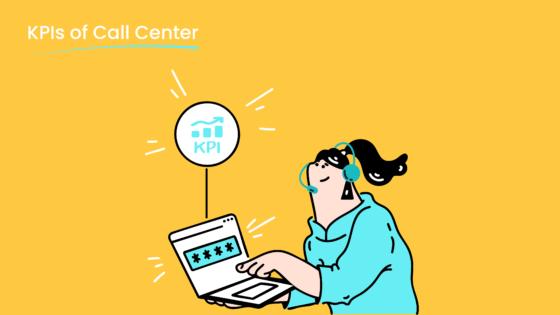Real-Life Strategies for Managing Difficult Customers in 2025

In 2025, delivering exceptional customer service is no longer optional—it’s a necessity. Customers are 2.4 times more likely to stay loyal when their problems are resolved quickly, and 64% will spend more if their issues are addressed in their preferred channel. These numbers highlight how to deal with unhappy customers effectively can directly impact your brand’s growth. Tools like Sobot’s omnichannel solutions empower businesses to meet these expectations by streamlining communication and enhancing customer satisfaction. Mastering these strategies ensures you don’t just resolve conflicts but also build lasting relationships.
Understanding Why Customers Become Difficult
Common Triggers for Customer Frustration
Frustration often stems from obstacles that prevent customers from achieving their goals. These barriers can range from unclear instructions to slow service. For example, when a customer encounters a glitch during checkout, it disrupts their experience and creates tension. Studies show that frustration is a psychological response tied to unmet expectations, leading to stress and dissatisfaction.
Timing also plays a role. Customers are less patient during busy periods or when solving complex issues. If your team sends surveys or requests feedback during these moments, response rates drop, and frustration increases. To avoid this, ensure your processes are seamless and intuitive. Tools like Sobot’s omnichannel solutions can help by streamlining communication and reducing delays.
The Role of Expectations in Customer Behavior
Customer behavior is heavily influenced by their expectations. When customers expect quick resolutions or personalized service, any deviation can lead to dissatisfaction. Research highlights that expectations shape how customers perceive your brand and their willingness to engage. For instance, during the COVID-19 pandemic, many customers adjusted their purchasing habits based on market conditions and service reliability.
Meeting or exceeding expectations builds trust. Using AI-driven tools, such as Sobot’s Voice/Call Center, allows you to anticipate customer needs and deliver tailored solutions. This proactive approach ensures customers feel valued and understood.
How Poor Communication Escalates Issues
Communication breakdowns often turn minor problems into major complaints. Passing customers between agents without resolving their issues creates a negative impression. Poorly trained staff or disjointed systems can further escalate matters, leaving customers feeling unheard.

Effective communication starts with empowering your team. Equip them with unified tools like Sobot’s Cloud Call Center, which consolidates customer data and streamlines interactions. This reduces errors and ensures consistent service. When internal teams align, customers benefit from smoother experiences, minimizing frustration and dissatisfaction.
Types of Difficult Customers and How to Deal with Them

Strategies for Handling Angry Customers
Angry customers often express frustration due to unmet expectations or poor service experiences. To deal with angry customers effectively, you need to practice active listening and maintain a calm presence. When customers feel heard, their anger often subsides. For example, if a customer complains about a defective product, acknowledging their frustration and offering a quick resolution, such as a replacement or discount, can turn the situation around.

Statistics emphasize the importance of addressing anger promptly. According to Enchant, 83% of angry clients switch brands after a negative experience. Additionally, Ringover reports that 29.2% of people feel angry when speaking to customer service, highlighting the prevalence of this issue. Using tools like Sobot’s Voice/Call Center can help streamline communication and reduce hold times, ensuring customers don’t wait long for assistance.
Empathy plays a crucial role in resolving complaints. By personalizing the interaction and showing genuine concern, you can rebuild trust and loyalty. Khoros found that 83% of customers develop stronger loyalty when complaints are addressed effectively. This demonstrates how empathy and responsiveness can transform conflicts into opportunities for growth.

Managing Demanding Customers Effectively
Demanding customers often expect high levels of service and attention. To manage them effectively, you need to balance their needs with your team’s capacity. Transparency is key. Sharing relevant information about timelines or limitations can help set realistic expectations. For instance, if a customer requests a custom solution, explaining the process and providing updates can build trust.
Research supports the importance of aligning service offerings with customer needs. Customizing services to meet preferences improves satisfaction and loyalty. A study on customer fit shows that tailored solutions lead to better outcomes. Sobot’s Omnichannel Solution enables you to personalize interactions across multiple channels, ensuring demanding customers receive consistent and high-quality service.
Service customization also helps manage rising expectations. When customers receive excellent service, their demands often increase. By leveraging tools like Sobot’s AI-driven chatbots, you can automate repetitive tasks and focus on delivering personalized support. This approach ensures demanding customers feel valued without compromising service quality.
| Evidence | Description |
|---|---|
| Customer Fit | Aligning service offerings with customer needs leads to higher satisfaction. |
| Transparency | Sharing sensitive information enhances trust and influences loyalty. |
| Service Customization | Customizing services improves satisfaction and loyalty. |
| Rising Expectations | Excellent service raises customer expectations, creating more demanding clients. |
Supporting Indecisive Customers with Patience
Indecisive customers often struggle to make decisions due to uncertainty or lack of trust. To support them, you need to practice active listening and tailor your communication to address their concerns. Reassuring them about your expertise and commitment to their best interests can help build confidence.
For example, if a customer hesitates to purchase a product, providing detailed information and answering their questions patiently can guide them toward a decision. Sobot’s unified workspace consolidates customer data, enabling you to personalize the interaction and address specific concerns effectively.
Patience is essential when dealing with indecisive customers. Clients often hesitate because they fear making the wrong choice. By offering solutions that align with their needs and providing clear explanations, you can help them feel more secure. This approach not only resolves their uncertainty but also strengthens their trust in your brand.
- Clients often hesitate due to a lack of trust in the designer's expertise or intentions.
- Reassuring clients about the designer's knowledge and commitment to their best interests can help them make decisions.
- Tailoring communication to address specific client concerns can build trust and facilitate decision-making.
Engaging Silent or Unresponsive Customers
Silent or unresponsive customers can be challenging to engage. They may hesitate to share their concerns, making it harder to identify and resolve their issues. To connect with these customers, you need to create a safe and welcoming environment that encourages communication.
Start by asking open-ended questions. For example, instead of asking, "Is there a problem?" try, "What can I do to make your experience better?" This approach gives them space to express their thoughts. A case study involving a therapist showed that asking thoughtful questions allowed silent clients to process their feelings internally, leading to significant progress. Similarly, you can use structured engagement techniques to help unresponsive customers feel comfortable.
Personalization also plays a key role. Silent customers often disengage because they feel overlooked. Tools like Sobot’s Omnichannel Solution allow you to access customer data and tailor your communication. For instance, if a customer hasn’t responded to emails, you can send a personalized follow-up with a friendly tone. Segmenting your audience and automating re-engagement flows ensures you reach out at the right time without appearing pushy.
Here are some strategies to re-engage silent customers effectively:
- Monitor engagement metrics to identify disengaged customers.
- Personalize re-engagement emails to make them relevant.
- Use segmentation to tailor messages based on customer behavior.
- Automate follow-ups with re-engagement triggers.
By combining empathy, personalization, and technology, you can turn silent customers into active participants in the conversation. This not only improves their experience but also helps you address their needs more effectively.
Addressing the Know-It-All Customer
Know-it-all customers often dominate conversations with their opinions or interrupt with unsolicited advice. While their confidence can be intimidating, you can manage these interactions by staying calm and focused.
One effective strategy is to address interruptions tactfully. For example, if a customer cuts you off, you can say, "I’d like to finish my point, and then I’d love to hear your thoughts." This approach maintains professionalism while setting boundaries. Establishing norms like "take space, make space" encourages balanced participation, ensuring everyone feels heard.
Requesting data to support their claims can also shift the conversation to a fact-based discussion. For instance, if a customer insists on a specific solution, ask them to explain their reasoning. This not only validates their input but also helps you guide the conversation toward a practical resolution. Modeling humility by admitting when you don’t have all the answers can further encourage open-mindedness.
Sobot’s Voice/Call Center can help you manage these interactions effectively. Its unified workspace consolidates customer data, allowing you to provide informed responses. Features like call tracking and AI-powered voicebots ensure you stay in control of the conversation, even with demanding customers.
By addressing know-it-all customers with confidence and tact, you can turn challenging interactions into opportunities for collaboration. This approach not only resolves complaints but also builds trust and loyalty.
Actionable Tips for Dealing with Difficult Customers
Staying Calm and Composed in High-Stress Situations
When dealing with difficult customers, staying calm is your most powerful tool. High-stress situations often escalate when emotions take over. To maintain a calm presence, focus on controlling your breathing and keeping your tone steady. This approach not only helps you stay composed but also reassures the customer that you are in control.
Avoid arguments at all costs. Instead, steer the conversation toward finding a resolution. For example, if an angry customer demands an immediate solution, acknowledge their frustration and explain the steps you’re taking to resolve the issue. Speaking with confidence and clarity shows that you are committed to helping them.

Using tools like Sobot’s Voice/Call Center can also reduce stress. Features such as call tracking and smart routing ensure that customers are connected to the right agent quickly, minimizing delays and frustration. Respecting their time by avoiding unnecessary hold-ups can significantly improve the interaction.
Using Empathy to De-escalate Tensions
Empathy is a cornerstone of effective customer service. When you show empathy, you create a connection that helps defuse anger and tension. For instance, if a customer feels unheard, acknowledging their feelings with phrases like, “I understand how this situation must be frustrating for you,” can immediately lower emotional intensity.
Empathy promotes mutual understanding and encourages constructive dialogue. Studies show that it reduces hostility and creates a calmer environment for problem-solving. By practicing active listening, you can uncover the root of the issue and personalize the interaction to meet their needs.
Sobot’s Omnichannel Solution supports this approach by consolidating customer data into a unified workspace. This allows you to access their history and tailor your responses, making them feel valued and understood. Empathy, combined with the right tools, turns complaints into opportunities for trust-building.
| Benefit of Empathy in Mediation | Description |
|---|---|
| Promotes Mutual Understanding | Empathy fosters a sense of respect and understanding between conflicting parties. |
| Encourages Constructive Dialogue | By seeing things from each other's perspective, parties can engage in more productive discussions. |
| Reduces Emotional Intensity | Empathy helps to deflate hostility and emotional tension, creating a calmer negotiation environment. |
Leveraging Positive Language to Build Trust
Positive language transforms difficult conversations into constructive ones. Instead of focusing on what cannot be done, emphasize what you can do. For example, rather than saying, “I can’t process your refund today,” try, “I’ll make sure your refund is processed by tomorrow.” This shift in tone reassures the customer and builds trust.
Positive scripting also helps de-escalate tensions. Affirmative language focuses on solutions, creating a sense of collaboration. For instance, if a customer complains about a delayed delivery, responding with, “Let me check the status and find the fastest way to get it to you,” shows your commitment to resolving their issue.
Case studies highlight how positive language improves customer interactions. It not only defuses tense situations but also enhances the overall experience. Tools like Sobot’s AI-powered Voicebot can assist by providing agents with suggested responses, ensuring consistency in tone and messaging. This approach helps you maintain professionalism while addressing complaints effectively.
- Positive language, or positive scripting, is a technique that enhances customer service interactions, especially in challenging situations.
- Using optimistic language can help de-escalate tensions and create a sense of understanding between the customer and the agent.
- Affirmative language can defuse tense situations, focusing on solutions and improving the overall customer experience.
Setting Boundaries While Maintaining Professionalism
Setting boundaries with difficult customers is essential for maintaining a healthy and productive customer support environment. Clear boundaries ensure mutual respect while allowing you to deliver quality service without compromising your team’s well-being. To achieve this balance, you can use written agreements to outline expectations and responsibilities. For example, you might establish preferred communication channels and response times to reduce misunderstandings.
Tip: Written agreements help clarify roles and prevent conflicts. They also provide a reference point for resolving disputes professionally.
When a customer demands immediate attention or unrealistic solutions, calmly explain the process and its importance for achieving quality results. For instance, if a customer insists on skipping steps in a resolution process, you can say, “To ensure the best outcome, we need to follow these steps. This approach guarantees accuracy and avoids future issues.” This method communicates value while maintaining mutual respect.
Here are some practical ways to set boundaries effectively:
- Explain the importance of following processes calmly and clearly.
- Set realistic expectations by outlining timelines and limitations.
- Respect personal time by avoiding 24/7 availability unless explicitly agreed upon.
Sobot’s Omnichannel Solution can help you manage boundaries seamlessly. By consolidating customer data and automating workflows, it ensures you stay organized and efficient. For example, its AI-driven tools can handle repetitive tasks, allowing you to focus on more complex customer complaints without feeling overwhelmed. This approach not only helps you maintain professionalism but also enhances customer satisfaction.
Following Up to Ensure Customer Satisfaction
Following up with customers after resolving their issues is a powerful way to build trust and loyalty. It shows that you care about their experience and are committed to continuous improvement. Successful follow-up strategies often involve using big data to anticipate customer needs and personalize the interaction. For example, mapping the customer journey helps identify pain points and key moments that influence satisfaction.

Personalization plays a crucial role in follow-ups. If a customer recently dealt with an angry complaint, sending a tailored email to check if the solution met their expectations can leave a lasting positive impression. Sobot’s Voice/Call Center simplifies this process by providing tools like call tracking and customer history. These features allow you to personalize follow-ups and address unresolved concerns effectively.
Empathy also enhances follow-ups. When you practice active listening during interactions, you gain insights into what matters most to your customers. Use this information to craft meaningful follow-ups. For instance, if a customer expressed frustration about delayed shipping, a follow-up email offering a discount on their next purchase can turn a negative experience into a positive one.
By combining empathy, data-driven insights, and personalized communication, you can ensure your follow-ups strengthen relationships and improve overall satisfaction.
Real-Life Examples and Templates for Managing Angry Customers

Email Templates for Addressing Complaints
Email communication is one of the most effective ways to deal with angry customers. A well-crafted email can defuse hostility, demonstrate empathy, and offer a clear resolution. When writing an email to address complaints, focus on acknowledging the customer’s frustration, providing a solution, and ensuring follow-up.
Here’s a simple template you can use to respond to an angry email:
Subject: We’re Here to Help
Dear [Customer’s Name],
Thank you for reaching out to us regarding [specific issue]. We understand how frustrating this situation must be, and we sincerely apologize for any inconvenience caused.
To resolve this matter, we have [specific solution, e.g., issued a refund, scheduled a replacement, etc.]. Please let us know if there’s anything else we can do to assist you further.
We value your feedback and are committed to improving your experience. If you have additional concerns, feel free to reply to this email or contact us directly at [contact information].
Warm regards,
[Your Name]
[Your Position]
[Company Name]
This template combines empathy with actionable solutions, ensuring the customer feels heard and valued. Tools like Sobot’s Omnichannel Solution can streamline email responses by consolidating customer data, enabling you to personalize communication and track follow-ups effectively.
Phone Call Scripts for Angry Customers Using Sobot's Voice/Call Center
Phone calls often require immediate action to defuse hostile customers. A structured script can help you stay calm and focused while addressing their concerns. Sobot’s Voice/Call Center simplifies this process by providing features like call tracking and AI-powered voicebots, ensuring you deliver consistent and professional service.
Here’s a sample script for handling an angry customer over the phone:
Agent: Hello [Customer’s Name], thank you for calling [Company Name]. My name is [Your Name], and I’m here to help. Could you please share more details about the issue you’re facing?
Customer: [Explains the problem]
Agent: I understand how frustrating this must be for you, and I truly apologize for the inconvenience. Let me check the details and find the best solution for you.
[Pause to review customer data using Sobot’s unified workspace]
Agent: Thank you for your patience. Here’s what we can do to resolve this: [Explain the solution]. Does this work for you?
Customer: [Responds]
Agent: I appreciate your feedback. I’ll ensure this is resolved promptly. If you have any further concerns, feel free to reach out. Thank you for giving us the opportunity to make things right.
This script emphasizes empathy, active listening, and clear communication. Using Sobot’s smart call routing and monitoring tools, you can connect customers to the right agent quickly, reducing wait times and frustration.
Social Media Responses to Negative Feedback
Social media platforms are often the first place customers voice their dissatisfaction. Responding effectively to negative feedback can protect your brand’s reputation and turn complaints into loyalty. Tailored responses that acknowledge the issue, offer solutions, and encourage dialogue are key.
Here’s how you can structure your responses:
| Strategy | Description |
|---|---|
| Quick Acknowledgment | Respond swiftly to show customers their opinions are valued, reducing potential brand damage. |
| Personalization | Address customers by name and reference their specific feedback to make them feel heard and valued. |
| Offering Solutions | Provide a resolution, such as refunds or improvements, to restore customer confidence in your brand. |
| Follow-Up | Check in post-resolution to show commitment to customer satisfaction and turn complaints into loyalty. |
| Encouraging Dialogue | Invite customers to share their thoughts privately to foster community and address concerns thoroughly. |
For example, if a customer posts a complaint about delayed shipping, you can respond with:
Hi [Customer’s Name], thank you for bringing this to our attention. We’re sorry for the inconvenience caused by the delay. We’ve checked your order and expedited the shipping process. You should receive it by [specific date].
If you have further concerns, please feel free to message us directly. We’re here to help and ensure your experience improves moving forward.
Sobot’s Omnichannel Solution integrates social media channels into a unified workspace, allowing you to monitor feedback, respond quickly, and track customer interactions. This ensures consistent and personalized communication across platforms.
Live Chat Scenarios for Resolving Issues
Live chat has become a cornerstone of customer service in 2025. It offers real-time communication, making it easier for you to address customer concerns quickly. However, managing live chat effectively requires preparation and strategy. Let’s explore some common scenarios and how you can handle them.
1. Scenario: An Angry Customer Demanding Immediate Help
When a customer starts a chat with frustration, your first step is to acknowledge their feelings. For example, if someone complains about a delayed delivery, you might say, "I understand how this delay has caused inconvenience. Let me check the status for you right away." This approach shows empathy and reassures the customer that you are focused on finding a resolution.
Using tools like Sobot’s Live Chat, you can access customer history instantly. This allows you to provide personalized solutions without asking repetitive questions. Features like AI-powered suggestions can also guide you in crafting responses that de-escalate tension. For instance, if the issue involves a billing error, you can quickly retrieve the transaction details and offer a clear explanation or refund.
2. Scenario: A Customer Seeking Technical Support
Technical issues often frustrate customers, especially when they don’t understand the problem. In this case, break down the solution into simple steps. For example, if a customer struggles to set up a product, you could say, "Let’s go through this together. First, ensure the device is connected to Wi-Fi. Then, press the reset button for 10 seconds."
Sobot’s unified workspace simplifies this process by consolidating customer data and product manuals in one place. You can even share links or screenshots directly in the chat, making it easier for the customer to follow along. This proactive approach not only resolves the issue but also builds trust in your brand.
3. Scenario: An Indecisive Customer Asking Multiple Questions
Indecisive customers often need reassurance before making a decision. If someone asks about product features repeatedly, respond with patience. For instance, you might say, "I see you’re comparing options. Let me highlight the key differences to help you decide." Providing clear and concise answers can guide them toward a resolution.
Sobot’s AI-driven chatbots can assist by handling repetitive queries, freeing you to focus on more complex concerns. This balance ensures that every customer receives the attention they need, whether they’re ready to buy or still exploring options.
4. Scenario: A Silent Customer Who Stops Responding
Sometimes, customers disengage during a chat. To re-engage them, ask open-ended questions like, "Is there anything else I can assist you with?" If they remain unresponsive, follow up with a friendly message summarizing the conversation and offering further help. For example, "I’ve noted your concern about the warranty. Feel free to reach out if you have additional questions."
Sobot’s automated follow-up feature can send reminders or updates, ensuring no customer feels forgotten. This small gesture can turn a silent interaction into a positive experience.
In-Person Strategies for Retail and Service Environments
Face-to-face interactions remain vital in industries like retail and hospitality. Managing difficult customers in person requires a unique set of skills. Here’s how you can handle common challenges effectively.
1. Scenario: An Angry Customer at the Counter
When a customer approaches you with anger, maintain a calm demeanor. Start by listening actively. For example, if someone complains about a defective product, say, "I’m sorry to hear about this issue. Let me see how I can resolve it for you." Avoid interrupting them, as this can escalate the situation.
Empathy plays a crucial role here. By showing genuine concern, you can defuse tension and focus on the solution. Sobot’s omnichannel solutions can support in-person teams by providing access to customer data, ensuring you’re well-prepared to address complaints.
2. Scenario: A Demanding Customer Requesting Special Treatment
Some customers expect more than what your policies allow. In these cases, set boundaries politely. For instance, if someone demands a discount not applicable to their purchase, explain the policy clearly. You might say, "I understand your request, but this discount applies only to members. Would you like to sign up for our program?"
Transparency builds trust. When customers see that you’re fair and consistent, they’re more likely to accept your explanation. Tools like Sobot’s ticketing system can help you document these interactions, ensuring consistency across your team.
3. Scenario: A Customer Seeking Immediate Assistance During a Busy Period
During peak hours, customers may grow impatient. To manage this, acknowledge their wait time and provide updates. For example, "Thank you for your patience. I’ll be with you in just a moment." This simple gesture shows that you value their time.
Sobot’s AI-powered voicebots can assist by handling routine inquiries, allowing your team to focus on in-person interactions. This ensures that every customer receives timely and efficient service, even during high-demand periods.
4. Scenario: A Customer Who Refuses to Leave Without a Resolution
Occasionally, a customer may insist on staying until their issue is resolved. In such cases, remain professional and solution-focused. For example, if someone disputes a charge, say, "Let me review this with my manager to ensure we address your concern accurately." This approach shows that you’re taking their complaint seriously.
Sobot’s cloud call center can support in-person teams by providing real-time access to customer records. This integration ensures that you have all the information needed to resolve issues quickly and effectively.
Tip: Always end in-person interactions on a positive note. A simple "Thank you for bringing this to our attention" can leave a lasting impression.
Benefits of Successfully Dealing with Difficult Customers
Turning Complaints into Opportunities for Growth
Customer complaints often highlight areas for improvement. When you address these concerns effectively, you can transform them into opportunities for growth. For example, analyzing feedback from angry customers can reveal gaps in your processes or products. By implementing solutions based on this feedback, you not only resolve issues but also enhance your offerings.
Many companies have successfully leveraged complaints to drive innovation. American Express uses sentiment analysis to monitor customer interactions, leading to a 35% increase in customer satisfaction and a 20% reduction in negative feedback. Advanced tools like Sobot’s Omnichannel Solution enable you to track customer complaints across multiple channels, ensuring you identify recurring issues and implement targeted improvements.
Other strategies include personalized service approaches and streamlined processes. These initiatives not only improve customer satisfaction but also foster loyalty. When you show customers that their feedback matters, they feel valued and are more likely to engage positively with your brand.
- A compilation of 40 case studies demonstrates how organizations enhance customer satisfaction through effective service initiatives.
- Strategies include advanced support technologies, comprehensive training programs, and personalized service approaches.
Building Long-Term Customer Loyalty
Effective conflict management builds trust and strengthens relationships. When you deal with angry customers empathetically, they often become loyal advocates for your brand. Active listening, empathy, and collaborative problem-solving are key strategies for fostering loyalty.
| Strategy | Impact on Customer Loyalty |
|---|---|
| Active Listening | Reduced escalations by 30% |
| Empathy | Improved customer satisfaction scores by 25% |
| Collaborative Problem-Solving | Increased first-call resolution rates by 40% |

Sobot’s Voice/Call Center supports these strategies by providing tools like call tracking and AI-powered voicebots. These features help you deliver personalized solutions quickly, ensuring customers feel heard and valued. When customers experience consistent and empathetic service, they are more likely to return and recommend your brand to others.
Enhancing Team Morale and Confidence
Successfully managing difficult customers boosts team morale. When your team resolves complaints effectively, they gain confidence in their abilities. This confidence translates into better performance and higher job satisfaction.
Empowering your team with the right tools is essential. Sobot’s unified workspace consolidates customer data, making it easier for agents to provide accurate and timely solutions. This reduces stress and ensures smoother interactions. Additionally, training programs focused on empathy and communication skills prepare your team to handle challenging situations with professionalism.
Positive outcomes also reinforce a sense of accomplishment. When your team turns angry customers into satisfied ones, they feel motivated to continue delivering exceptional service. This creates a cycle of improvement that benefits both your employees and your customers.
Tip: Celebrate team successes by sharing positive feedback from customers. Recognition boosts morale and encourages continued excellence.
Strengthening Brand Reputation with Sobot's Omnichannel Solutions
Your brand reputation depends on how well you handle customer interactions. Customers often judge your business based on how quickly and effectively you resolve their concerns. Sobot's Omnichannel Solutions provide tools that help you deliver seamless service across multiple channels, ensuring every customer feels valued.
When customers face issues, they expect quick resolutions. For example, a study by HubSpot found that 90% of customers rate an immediate response as "important" or "very important." Sobot's unified workspace consolidates customer data, enabling your team to respond faster and with greater accuracy. This efficiency reduces frustration and prevents angry complaints from escalating.
Empathy plays a critical role in building trust. Sobot's AI-driven chatbots and live chat tools allow you to personalize interactions, showing customers you understand their needs. For instance, if a customer struggles with a technical issue, Sobot's solutions provide step-by-step guidance, ensuring they feel supported throughout the process.
Consistency across channels strengthens your brand image. Sobot's Omnichannel Solutions integrate platforms like social media, email, and voice calls into one system. This integration ensures customers receive the same level of service, whether they contact you via Twitter or call your support team. A consistent experience builds loyalty and encourages positive word-of-mouth.
By leveraging Sobot's tools, you can turn challenges into opportunities. Resolving complaints effectively not only helps individual customers but also enhances your overall reputation. When customers see your commitment to quality service, they are more likely to trust your brand and recommend it to others.
Tip: Use Sobot's analytics features to track customer satisfaction and identify areas for improvement. Data-driven insights help you refine your strategies and maintain a strong reputation.
Managing upset customers requires a blend of empathy, clear communication, and professionalism. These qualities not only de-escalate angry situations but also foster trust and loyalty. Research shows that companies excelling in customer service outperform competitors by 80% in revenue growth. Tools like Sobot's Voice/Call Center simplify this process by unifying customer data and enabling faster resolutions. For example, its smart call routing ensures customers connect with the right agent, reducing frustration.
Implementing these strategies and using templates can help you turn challenges into opportunities. Organizations that adopt structured improvement methods report 42% better ROI and 29% higher agent satisfaction. By addressing customer concerns effectively, you enhance their experience and strengthen your brand. Start applying these insights today to build lasting relationships and drive success.
FAQ
What is the best way to calm an angry customer?
Start by listening actively and acknowledging their frustration. Use empathetic phrases like, "I understand how this must feel." Tools like Sobot’s Voice/Call Center help reduce wait times, ensuring customers feel valued. Studies show 83% of customers calm down when they feel heard and understood.
How can I handle silent or unresponsive customers?
Ask open-ended questions to encourage dialogue. For example, "What can I do to improve your experience?" Use Sobot’s Omnichannel Solution to personalize follow-ups and re-engage them. Silent customers often respond better to tailored communication that shows you care about their concerns.
How do I manage demanding customers without overwhelming my team?
Set clear boundaries and communicate transparently. Explain timelines and limitations calmly. Sobot’s AI-driven tools automate repetitive tasks, allowing your team to focus on high-priority demands. This balance ensures demanding customers receive quality service without overburdening your staff.
Why is empathy important in customer service?
Empathy builds trust and defuses tension. When you acknowledge a customer’s feelings, they feel valued. Research shows empathetic interactions improve satisfaction by 25%. Sobot’s unified workspace consolidates customer data, enabling agents to provide personalized and empathetic responses efficiently.
How can Sobot’s solutions improve customer satisfaction?
Sobot’s tools, like the Omnichannel Solution and Voice/Call Center, streamline communication and reduce delays. Features like AI-powered chatbots and smart call routing ensure quick resolutions. These innovations enhance customer satisfaction by providing seamless, personalized, and efficient service across all channels.
See Also
Transforming Customer Support With AI Service Agents
Effective Strategies for Quality Management in Call Centers
How to Successfully Manage Live Chat Support Agents
